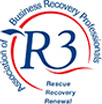What is Creditors’ Voluntary Liquidation?
Creditors’ Voluntary Liquidation is probably the most common type of insolvency and is a fairly simple process. Once the decision has been taken that this is the most appropriate course of action, a meeting of directors is held to approve certain resolutions:
For help and information about the business insolvency in London, contact our London office for a free, no obligation consultation.
- That the company is insolvent
- That the company should be wound up
- That the company should cease to trade
- That meetings of the shareholders and creditors should be convened to pass resolutions to formally place the company into liquidation
- That the company engage the services of a licenced Insolvency practitioner.
After the initial meeting with the directors, we will have collated all of the necessary information to assist you with the CVL process. We will take responsibility for notifying all creditors, lenders, finance companies and HMRC. We will also notify your employees and assist them in dealing with claiming their employment entitlements.
Between the initial directors’ meeting and the formal shareholders’ and creditors’ meetings, the directors still remain responsible for the company’s actions. We will though assist you and provide advice where necessary.
The shareholders’ and creditors’ meetings are usually held within a period of up to 21 days after the initial directors’ meeting. These meetings are virtual meetings – held either by Skype or by creditors dialling in. However, a physical meeting will need to be held, if 10% or more of creditors request one.
The Liquidator is formally appointed at the shareholders’ meeting, with that appointment usually confirmed at the creditors’ meeting – the creditors’ meeting will usually be 30 minutes after the shareholders’ meeting. The creditors do have the option of appointing an alternate insolvency practitioner as liquidator, but to do so, will require 50% plus £1 of the creditors to vote in favour.
Once the liquidator’s appointment is confirmed, it is the liquidator’s responsibility to maximise the realisations from the company’s assets and to utilise those funds to first discharge the costs of the liquidation and secondly utilise any balance to paying a distribution to creditors.
The directors are entitled to offer to purchase the assets of the company from the liquidator. However, the liquidator can only agree a sale after the formal appointment, which is following the meeting of creditors.
Contact our London based Insolvency team for more information.


